A Regional Guide for a Delicious Trip
The Sweetest Journey: Exploring France by Pastries
We are a team of a team of well-traveled food lovers here at Cerca, and we have sampled confections across continents, and there are absolute stand-outs everywhere… but there is still nothing like France.
French pastries are a reflection of the country’s history, dating back centuries, from royal kitchens to rustic farmhouses. Each region has developed its own take on dough, butter, sugar, and fillings, shaped by local agriculture and cultural influences.
So on your journey, here are our best recommendations for the most indulgent spots, hidden bakeries, and hands-on experiences to make your journey sublimely delicious.

1. Paris: The Classic Croissant & Mille-Feuille
The croissant, though now the symbol of France, has Viennese roots. It arrived in Paris in the 19th century with Austrian baker August Zang, who opened a bakery specializing in kipferl, a crescent-shaped bread. Over time, French bakers refined the recipe by introducing laminated dough – a process where butter and pastry are layered, then folded several times to create super-thin sheets stacked into a dough – that results in the flaky, buttery marvel we know today.
The mille-feuille (“thousand leaves”) dates back to the 17th century and was perfected by Marie-Antoine Carême, the pioneer of haute cuisine. Its delicate layers of crisp puff pastry and velvety pastry cream symbolize the elegance of French pastry craftsmanship.
There are no shortage of excellent bakeries in Paris – you can throw a rock in any direction and hit one. So our best advice is to go out and try as many as you can!
Where:
Haute: Pâtisserie Yann Couvreur – Known for its mille-feuille, assembled to order for optimal crispness.
Hidden Gem: Du Pain et des Idées – A rustic boulangerie serving one of the best croissants in the city.
Hands-on Experience: Take a croissant-making class at La Cuisine Paris and master the art of lamination.

2. Brittany: Kouign-Amann
The kouign-amann, meaning “butter cake” in Breton, originated in the coastal town of Douarnenez in the 19th century. The story goes that a resourceful baker, faced with a shortage of ingredients, combined an abundance of butter and sugar with leftover bread dough. The result was a caramelized, golden masterpiece with a crisp exterior and a meltingly soft interior.
Today, it is considered one of the most indulgent pastries in France, its richness a reflection of Brittany’s dairy heritage, where some of the country’s finest butter is produced.
Where:
Haute: Maison Georges Larnicol – A Meilleur Ouvrier de France (MOF) known for perfecting the kouign-amann. Many shops throughout France, but most are in Brittany.
Hidden Gem: François Kouign Amann in the old walled town of Vannes, try their amazing Kouign Amann Pommes (with apples) 6, place des Lices, Vannes, France 56000
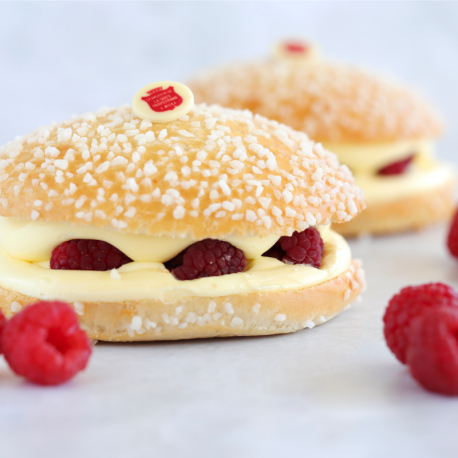
3. Provence: Tarte Tropézienne
In the 1950s, Polish pastry chef Alexandre Micka settled in Saint-Tropez and crafted a brioche pastry filled with a light, fragrant pastry cream. When Brigitte Bardot visited during the filming of And God Created Woman, she fell in love with the dessert and suggested its name: tarte tropézienne.
This pastry’s golden, sugar-dusted top hides a luscious, airy cream filling, often infused with orange blossom. It has since become a staple of the Riviera.
Where:
Haute: La Tarte Tropézienne – The original bakery that still serves the best version. There are a couple dozen shops around France, but go to Saint-Tropez for the most authentic and the most variety.
Hidden Gem: Aux deux Freres – A legendary local bakery with one of the most picturesque storefronts in Saint Tropez.
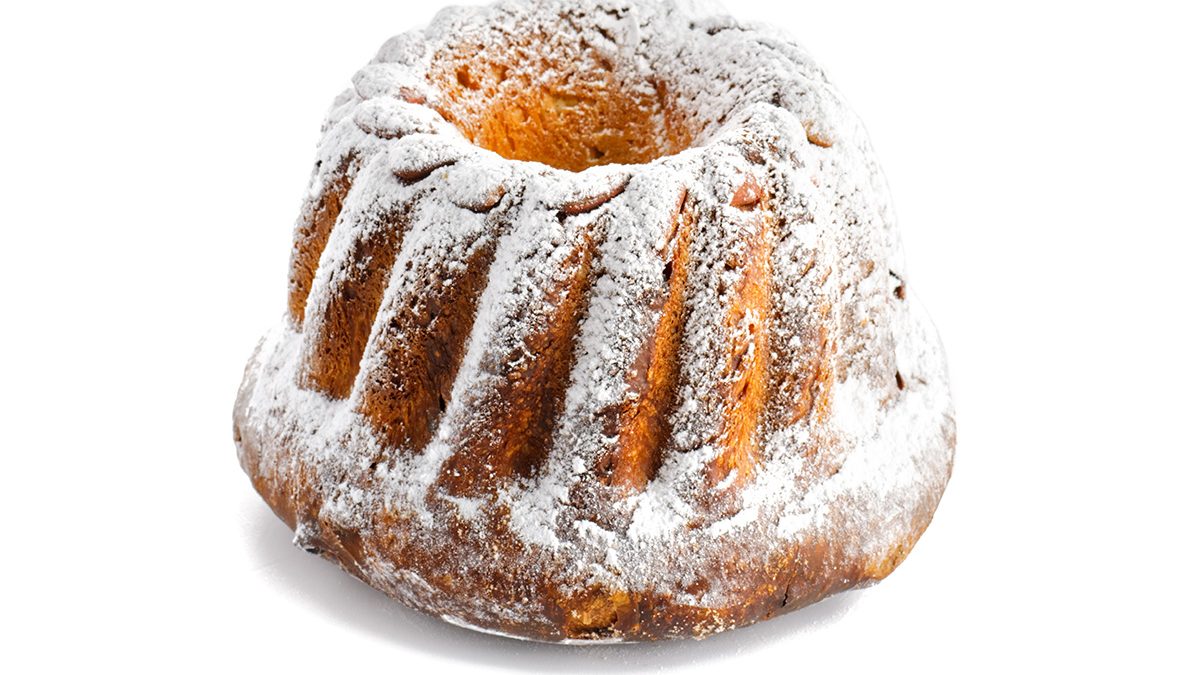
4. Alsace: Kouglof
Kouglof, also known as Gugelhupf in German-speaking regions, is a traditional Alsatian yeasted cake that has traveled across Central Europe. The pastry is instantly recognizable thanks to its distinctive tall, fluted mold, which gives it a crown-like appearance. Often dusted with powdered sugar, Kouglof is enriched with butter, eggs, almonds, and sometimes raisins, and is typically flavored with rum or Kirsch (cherry brandy).
Its history is steeped in European culinary tradition, tracing back to the Austro-Hungarian Empire. Some legends suggest that the recipe was brought to France by Queen Marie-Antoinette, an Austrian princess before becoming Queen of France. Others say it was popularized by bakers in Vienna and Alsace, both of which were influenced by Germanic and Central European baking techniques.
Kouglof is often associated with holiday traditions in Alsace and is a staple of Christmas markets in Strasbourg, Colmar, and other towns. However, it is also enjoyed year-round, especially at breakfast or as an afternoon treat with coffee or Vin d’Alsace (Alsace wine).
Where:
Haute: Pâtisserie Gilg in Colmar – A favorite for an authentic kouglof.
Hidden Gem: Maison Alsacienne de Biscuiterie – A small bakery preserving the old-world recipe.
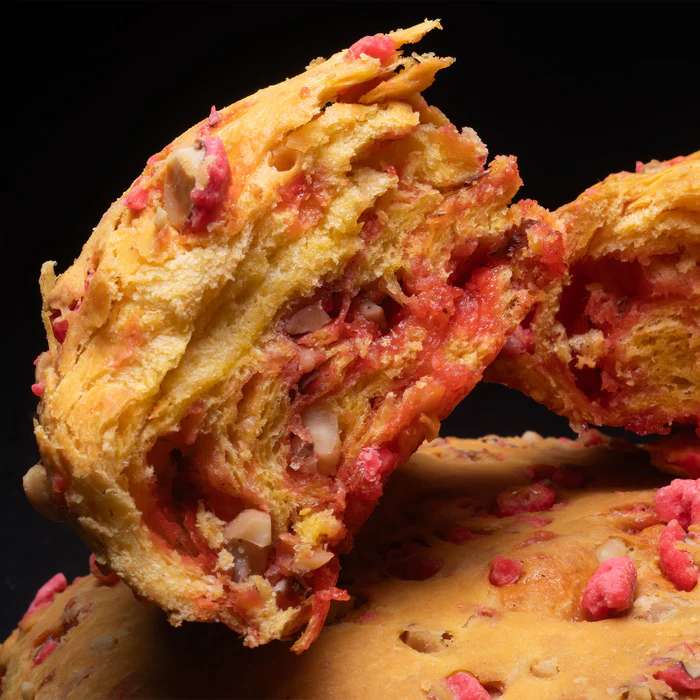
5. Lyon: Praluline
The Praluline is a vibrant pink, nutty brioche that has become synonymous with the city of Lyon and its deep-rooted culinary traditions. Created in 1955 by Auguste Pralus, a celebrated pastry chef and chocolatier, the Praluline is made from rich, buttery brioche dough studded with crushed pink pralines—candied almonds and hazelnuts caramelized with sugar.
Though pralines themselves have a long history dating back to the 17th century, the Praluline was a modern reinvention. Pralus, whose family owned a bakery in Roanne (a town near Lyon), sought to elevate the classic brioche by incorporating pralines, a regional specialty. The result was a pastry that was not only beautiful but also indulgently rich, with a delightful contrast between the soft brioche and crunchy caramelized nuts.
Today, the Praluline is a staple of Lyon’s gastronomy and is often found in the windows of boulangeries throughout the city. Its bright pink specks and golden crust make it visually striking, and its flavor—a balance of buttery, nutty, and caramelized sweetness—is unforgettable.
Where:
Haute: Pralus – The original creator.
Hidden Gem: Boulangerie du Palais – A lesser-known but equally fantastic spot.
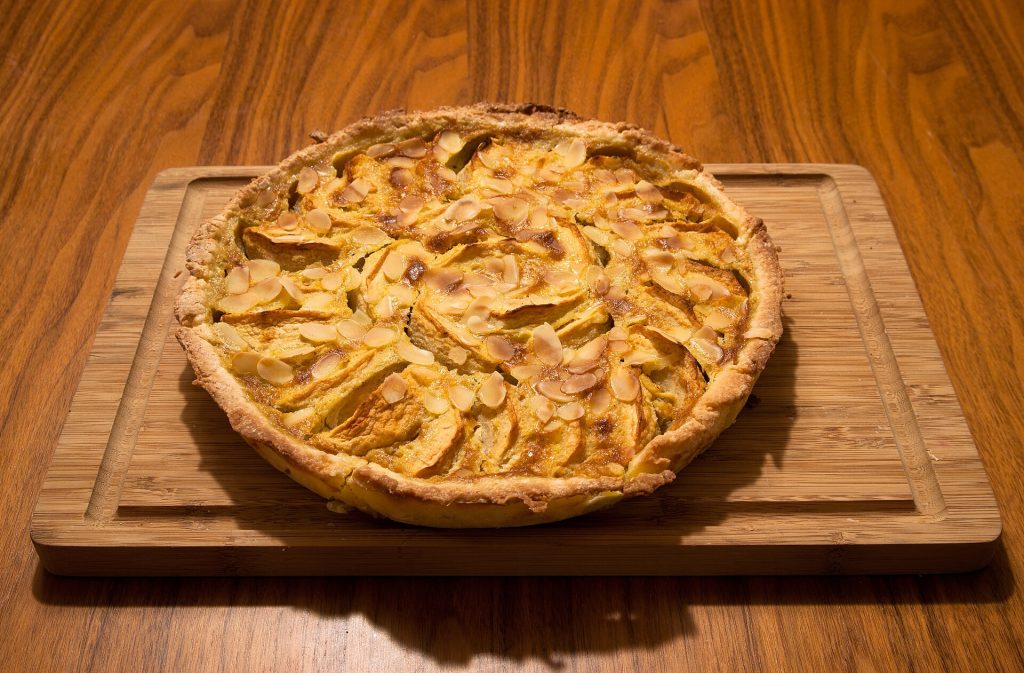
6. Normandy: Tarte Normande
The Tarte Normande is a classic French apple tart that hails from Normandy, a region famed for its apples, dairy products, and Calvados (apple brandy). Unlike the more widely known Tarte Tatin, which features caramelized apples and an upside-down preparation, the Tarte Normande is characterized by thinly sliced apples nestled in a rich, custard-like filling, often flavored with Calvados or vanilla.
Apples have been cultivated in Normandy since at least the Middle Ages, and the region has long been known for its production of cider and apple-based spirits. Normandy’s lush pastures also make it one of France’s leading dairy regions, producing world-class butter and cream, which are essential to the tart’s luscious texture.
The Tarte Normande likely originated in the countryside, where home bakers sought to create a dessert that showcased the abundance of local ingredients—butter, cream, eggs, and apples. Over time, it became a staple in Normandy’s pâtisseries and cafés, cementing its place as an iconic regional specialty.
Today, the tart is a must-try for visitors to Normandy, and it’s often served with a dollop of crème fraîche or a glass of locally made cider or Calvados.
Where:
Haute: Aux Délices Normands in Franqueville-Saint-Pierre – crowned the best bakery in France by a french food show La Meilleure Boulangerie de France.
Hidden Gem: Pâtisserie Jean-François Foucher – a delicious bakery, take a pastry class here if you can swing it!
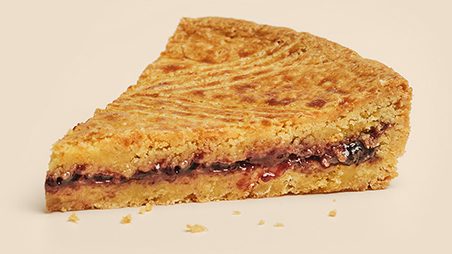
7. Basque Country: Gâteau Basque
Gâteau Basque (Pastiza Basquaise in Basque) is a traditional pastry from the Basque region, an area straddling the border of France and Spain. It is a buttery, dense cake filled with either black cherry jam or vanilla pastry cream, each version carrying its own historical and regional significance.
The origins of Gâteau Basque date back to the 17th century, when Basque farmers’ wives baked a simple, sturdy dessert using ingredients readily available in their homes—flour, butter, sugar, and eggs. Over time, fruit preserves and custard were added to enhance the flavors. The first known version of this cake was made with black cherry jam, which remains a favorite in the village of Itxassou, a key cherry-growing region in the French Basque Country.
By the 19th century, the recipe had evolved into the form we recognize today, and it became a symbol of Basque culinary heritage. Gâteau Basque is now celebrated annually in the town of Cambo-les-Bains, where a festival (Fête du Gâteau Basque) is held to honor this beloved pastry.
Unlike many delicate French pastries, Gâteau Basque is sturdy and rustic, making it ideal for travel and picnics. It pairs perfectly with coffee, a glass of Basque cider, or a fortified wine like Jurançon.
century. It represents Basque culinary heritage, with recipes passed down for generations.
Where:
Haute: Maison Pariès in Saint-Jean-de-Luz, the recipe has been passed down through the generations since before World War 2.
Hidden Gem: Pâtisserie Etchebaster – 98QQ+CF Saint-Jean-de-Luz

8. Bordeaux: The Canelé
The Canelé is a small, caramelized pastry that hails from Bordeaux, a city renowned for its wine but equally deserving of praise for this delightful sweet. The exterior is dark, deeply caramelized, and crisp, while the inside is soft, custardy, and infused with vanilla and rum. The contrast in textures is what makes this pastry so unique and beloved.
The origins of the canelé trace back to the 18th century, with local lore suggesting it was invented by nuns from the convent of the Annonciades in Bordeaux. The pastry was originally called “canelat” or “canelet”, referring to the fluted copper molds in which they are baked. The shape is an essential feature, giving the pastry its distinctive ridges and crisp crust.
Bordeaux’s wine industry also played a role in its creation. Winemakers used egg whites to clarify their wines, leaving them with an excess of egg yolks. This surplus of yolks led bakers to incorporate them into pastries, including the canelé.
Despite its long history, the canelé nearly faded into obscurity until the 20th century, when it was revived by local bakers and became a Bordeaux specialty once more. Today, it is synonymous with the city, often enjoyed with coffee or a glass of sweet Sauternes wine.
Where:
Haute: Baillardran – Perhaps the most famous canelé shop in Bordeaux, known for perfecting the recipe with its signature balance of crispy crust and creamy interior.
Hidden Gem: La Toque Cuivrée – A local favorite that produces some of the best traditional canelés at more affordable prices.
One more recommendations!
Hands-on Experience For those who want to master the art of french pastry, Atelier des Chefs offers pastry workshops where you can learn the techniques behind the perfect caramelization and custard texture.